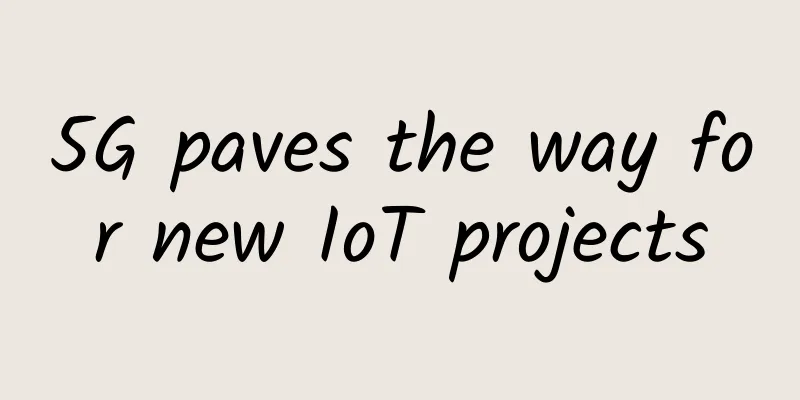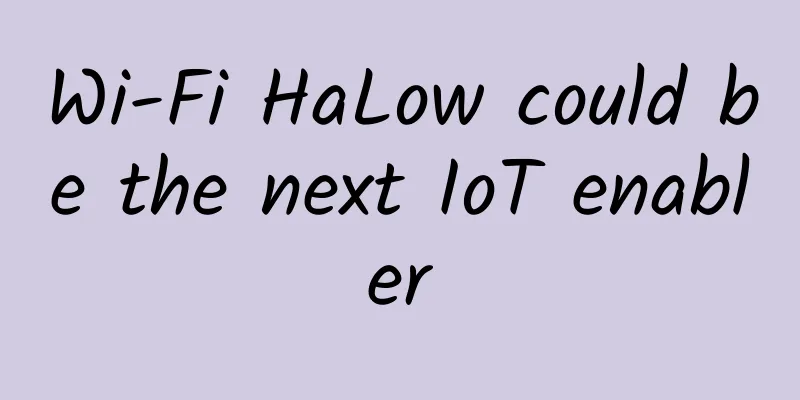5G paves the way for new IoT projects

|
Since its major launch two years ago, 5G has continued to maintain a steady pace of adoption and commercialization around the world. The fifth generation (5G) technology uniquely combines real-time data transmission and device communication, wide coverage and low latency, making it suitable as an enabler for larger and more complex IoT deployments. In addition, as more and more telecom providers are now diversifying their services through vertical IoT enablement, enterprises have begun to work on more ambitious projects. Let’s take a closer look at the growth and development opportunities that the promotion of 5G brings to IoT companies. Complete remote operationThe pandemic has brought unprecedented workplace disruption, forcing companies to switch to remote work even in industries that have historically relied on direct manual labor, such as manufacturing, energy, and supply chain. In this crisis, the Internet of Things has proven to be a booster for remote work, with systems that connect terminals and smart devices allowing employees to monitor and manage production lines and their performance, warehouse and inventory conditions, and other key indicators in real time. According to 84% of stakeholders surveyed by Vodafone's 2020 IoT Focus Report, this is a key factor in maintaining business continuity. 5G will further enhance existing remote monitoring capabilities. Workers can take advantage of high-quality, uninterrupted video streams from cameras on the shop floor, rather than relying solely on sensor data. Real-time video streaming has proven to be important in timely detection of defects and downtime, product quality and employee monitoring, and large-scale on-site inspections. Human-machine interface during 5G deploymentIn the process of 5G deployment, on-site network deployment will enable business owners to expand the scale of their robotic and connected machinery infrastructure, supplemented by advanced operational control layers such as human-machine interfaces. In this way, enterprises can develop more self-sufficiently. The need for on-site labor will be minimized, and employees can maintain fine-grained real-time control and management operations of machinery from anywhere. Currently, Asian manufacturers are blazing a trail with 5G-enabled projects with the assistance of local vendors of telecom IoT. A notable example in this area is China’s leading cement manufacturer Conch Group, which adopted 5G in 2019 with the help of Huawei and has since reported not only project success but also significant resource utilization improvements and energy efficiency gains. Productive Virtual CollaborationWith the shift to remote work, the existing workplace communication process has been subverted, and innovative technologies such as the Internet of Things have entered people's field of vision as auxiliary tools for distributed teams. As remote workers start to set up shop, connected conferencing equipment, previously the preserve of smart conference rooms, has migrated to home offices. Devices such as cameras with automatic speech recognition engines and interactive whiteboards with real-time editing capabilities form the foundation of working from home, playing an important role in creating engagement during team calls and reducing the friction of remote collaboration. In addition, employees are increasingly relying on their virtual assistants (such as Alexa or Google Nest) to take notes during video calls or create reminders and to-do lists, making it easier to stay focused. Collaboration supportThe introduction of 5G is encouraging teams to take their collaboration setup up a notch and integrate solutions to make online meetings more engaging. With 55% of businesses surveyed for the Nokia 5G Report finding VR meetings attractive, VR meetings are currently making waves in the business world and are more accessible than ever before thanks to 5G’s faster connection speeds, better bandwidth and reliability. In a virtual environment, employees can communicate face-to-face as lifelike avatars, share data, and display images and videos. During meetings, VR enables a near-lifelike sense of presence, which facilitates better understanding between participants while also overcoming feelings of loneliness. The convergence of VR and IoT can also allow remote teams to interact freely with digital twins – virtual 3D replicas of equipment or other physical assets, automatically created based on real-time sensor data. With 5G ensuring uninterrupted and fast data transmission, employees can get together in a virtual room and collaborate effectively on some simulated objects without leaving their homes. With effective means of collaboration across time and distance, there is no reason for companies to rush back to the office. However, they can still adopt remote work as a viable option long-term after the epidemic subsides. Customer ExperienceCustomer experience remains a key market differentiator in 2021. Over the past year, consumers across generations have become more tech-savvy and accustomed to highly facilitated omnichannel journeys. Along with this, while understandably prioritizing safety and value for money, today’s customers are less willing to try new things and crave excitement. The increasing adoption of 5G makes the Internet of Things, previously a slower-to-adopt technology in retail, banking, hospitality and other customer-facing industries, the right tool to deliver on these changing expectations. Unmanned supermarketFor example, improved connectivity will bring cashier-free store technology, which is actively being implemented by large chains, closer to tiered retailers outside of cities, allowing merchants to meet customer demand for a touchless, hygienic, in-person shopping experience. Similar technology can also be fully implemented at bank branches, making it easier for customers to achieve cardless withdrawals and touchless self-service. Autonomous transportation and last-mile delivery is another technology that 5G makes feasible to promote employee and customer safety. With faster transmission speeds, companies can now implement data-intensive but more comprehensive and data-efficient vehicle-to-vehicle communication systems for their delivery vehicles. In addition to making the in-person experience safer, IoT will make it more engaging and convenient. Today, major retail brands are investing in smart mirrors and fitting rooms that not only overlay clothing and makeup on the customer’s image, but also provide instant updates on product availability as part of the store’s ecosystem. Growth and innovationFor IoT companies, the growth and innovation avenues brought about by the promotion of 5G are not only numerous, but also within reach. By partnering with telecom operators and specialized IoT development companies, enterprises can quickly enhance existing connected infrastructure and tap into new IoT use cases while ensuring a successful and secure transformation. |
>>: Tested in 6 cities! How fast can 5G uplink with Super Uplink run?
Recommend
Where does the strength of 5G factories that “take over” 5G+Industrial Internet come from?
In order to accelerate the industry's quality...
Learn how to use IPv6 to surf the Internet in five minutes
1. Introduction to IPv6 As the technical foundati...
To promote the building of core capabilities, Huawei proposes a top-level design framework for operators' digital transformation
Today, at the MWCS 2021 media analyst pre-communi...
Giants compete for dominance in cloud computing! What new changes will 5G and the epidemic bring?
Following personal computers and the Internet, cl...
Interviewer: Tell me what happens after you enter the URL in the address bar and press Enter?
[[401931]] This article is reprinted from the WeC...
What is the environmental impact of 5G and how will it impact the world?
In recent years, commercial real estate owners ha...
How will 5G technology change application development?
Technology is constantly evolving, and it's e...
The turning point has arrived, and operators will face major changes in 2019
According to the financial report, China Telecom&...
Maxthon Hosting: 20% off on native IPs in Osaka/Tokyo, Japan, XEN/KVM architecture, monthly payment starting from 52 yuan
The tribe has shared information about Maxthon ma...
ColoCrossing US VPS 50% off/Bare Metal Cloud 35% off, $1.97/month-1GB/25G SSD/20TB@1Gbps
ColoCrossing Easter promotion has started, with 5...
Good news for 5G: the rate is no higher than 4G, and you don’t need to change your phone number when you change your phone
Large bandwidth, large connections, low latency a...
5 ways 5G will change the world
As communications technology goes, the switch fro...
5G and Edge AI: Solving Traffic Management Problems
The way we commute may have changed over time, bu...









